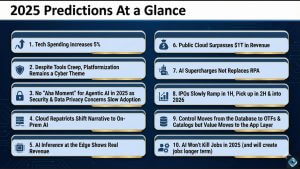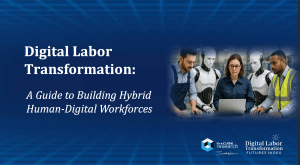With global edge computing spend projected to reach $317 billion by 2026, organizations must modernize infrastructure, embrace AI at the edge, and simplify operations to remain competitive.
Global interest in edge computing is surging, and with good reason. The convergence of AI-driven applications, low latency requirements, and resilient infrastructure needs is impacting where and how software runs. Edge is no longer an afterthought. It’s the new center of innovation.
In this week’s episode of AppDevANGLE, I sat down with Bruce Kornfeld, Chief Product Officer at StorMagic, to discuss what’s driving edge adoption, how infrastructure and application decisions are evolving, and why simplicity, performance, and cost efficiency are critical to success.
From Data Center to Edge
Historically, organizations have treated the edge as a secondary deployment environment, often reusing aging servers, desktops, or repurposed cloud-connected hardware. But as Bruce noted, that’s changing fast.
“Edge is where the data is generated. It’s where the action is,” said Kornfeld. “It’s no longer acceptable to rely on outdated infrastructure. Applications demand real-time, local processing.”
Our research confirms this shift. 66% of enterprises are prioritizing infrastructure modernization for distributed environments, with many realizing that round-tripping data to cloud or core data centers introduces unacceptable latency, costs, and resiliency concerns.
AI at the Edge
One of the most significant drivers of edge adoption today is AI enablement. Whether it’s computer vision in retail, predictive maintenance in manufacturing, or real-time analytics in transportation, AI workloads are moving closer to where data originates.
“It’s not fully rolled out yet, but there’s massive interest in deploying AI at the edge,” Kornfeld shared. “Organizations want to make real-time decisions on site and not wait for cloud round trips.”
As edge AI use cases grow, so do the infrastructure demands. Solutions must offer local high availability, automated management, and support for containerization and virtualization, all while fitting within the limited space and power envelopes typical of edge locations.
Why Simplicity and High Availability Matter
Edge environments often lack local IT staff. That means automation, remote manageability, and ease of deployment become mission-critical. According to our research, skill gap issues and platform complexity are the two leading barriers to modernization at the edge.
StorMagic’s answer is its SvHCI platform, an all-in-one hyperconverged infrastructure solution designed specifically for the edge.
“With SvHCI, everything is in the same box—storage, compute, virtualization, and management,” said Kornfeld. “It installs in under an hour and doesn’t require a trained IT staff on-site.”
Built on KVM, a widely adopted Linux-based hypervisor, SvHCI brings the reliability of enterprise virtualization without the licensing burden or operational overhead. That simplicity translates to real business value even when mission-critical uptime is a must.
Rising Costs and Market Opportunity
The edge computing narrative is inseparable from recent market disruption in the virtualization landscape. Following VMware’s acquisition by Broadcom, there have been questions around licensing costs and even what alternatives exist.
“Customers are seeing 60–70% savings on licensing costs by switching to SvHCI,” Kornfeld noted. “There’s a rush to move off VMware, especially for SMBs and mid-market enterprises.”
In fact, 76% of IT decision makers are actively exploring alternative virtualization platforms due to cost concerns. As budgets tighten and modernization remains a top priority, affordable and reliable solutions are gaining interest fast. Whether a migration occurs is to be seen.
Power, Performance, and Portability
Beyond software, the physical edge footprint is evolving. StorMagic is embracing partnerships with HPE, Lenovo, Supermicro, and Simply NUC to deliver compact, short-depth servers optimized for edge use cases from 5G to industrial IoT.
“You can’t assume a traditional rack environment at the edge,” Kornfeld explained. “Microservers with enterprise performance are key to meeting power, cooling, and space constraints.”
With AMD and Intel innovations improving compute density and energy efficiency, edge deployments no longer have to compromise on performance.
Planning the Edge Strategy
Edge computing success depends on far more than hardware. It requires careful consideration of application needs, operational models, and support requirements. Too often, organizations delay modernization due to perceived complexity.
“It’s overwhelming, and I don’t blame CIOs. It’s a hard job,” Kornfeld said. “But doing nothing is a risk. Simpler solutions and good partners can help get you there.”
At theCUBE Research, we continue to track the evolving edge ecosystem. From AI enablement to HCI adoption to cost-driven virtualization strategies, the market is full of opportunity and organizations that move now will have the competitive edge.
For more information, visit stormagic.com/svhci or explore our edge computing coverage at theCUBE Research.



